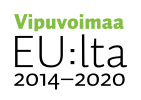The aim of the project is to improve the energy efficiency of properties by finding the property and situation specific ”energy minimum” - a situation where a minimum amount of energy is used while still preserving a comfortable environment within the building with the help of new and innovative technical solutions. In the KIEMI project the primary focus is not on new properties or so-called ”smart buildings”, but on older buildings and apartments, which are poorer in terms of their thermal energy efficiency, and therefore have the greatest potential for energy savings. In addition to the cost saving which is obtained from the improving of the energy efficiency of the real estate, methods can be used to improve the inhabitants' and users' condition experiences.



Background
The reduction of greenhouse gas emissions is one of the most challenging global objectives to be faced in the coming years. Achieving a low carbon economy, energy savings, a climate-friendly approach and ecologically sustainable choices will require new and innovative services, solutions and products. One of the largest areas with the best potential for making savings is the energy used by properties. In particular, the energy efficiency of older properties, which account for the great majority of the total building stock, could be improved considerably. The innovative utilization of current technology can enable the creation of different kinds of solutions for monitoring and visualizing the consumption and use of energy by properties, thus increasing knowledge of potential points where energy savings can be made in older properties.
Goal
The aim of the project is to develop smart, portable, and cost-effective technical systems that can be utilized to enable energy savings in older properties. In the project, proof-of-concept demonstrations and prototype applications will be developed that illustrate how cost-effective, transparent, and modular solutions can be utilized to improve the energy efficiency of buildings. The methods developed during the project can also be used to map out the overall energy use and offer users knowledge of their own energy use behavior. The results of the project will help achieve energy savings by reducing the energy used in apartments and in heating buildings, improve liveability and working conditions, as well as reducing the carbon footprint generated by using the property. The project will be carried out in collaboration with local actors in the private and public sector, who can participate in the pilot schemes implemented in the project by offering properties, equipment, and devices for use in the research.
Funding source
Euroopan alukehitysrahasto (EAKR)
Partners
Porin kaupunki (tilayksikkö), Länsi-Suomen Diakonialaitoksen säätiö (asumisyksikkö), Länsirannikon Koulutus Oy WinNova, Satakunnan Rakennusinsinöörit ja -arkkitehdit ry, AQVA.IO Oy, Riffid Oy, Aline Oy, Tampereen yliopiston rakennusfysiikan laboratorio
Kv-kumppanit: Keion yliopisto (SFC), Musashinon yliopisto (Asia AI Institute), Luzernin yliopisto (iHome lab)
